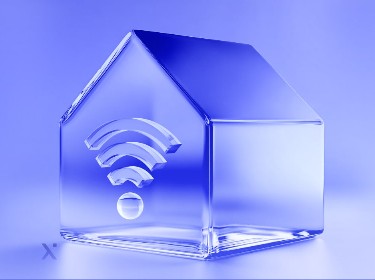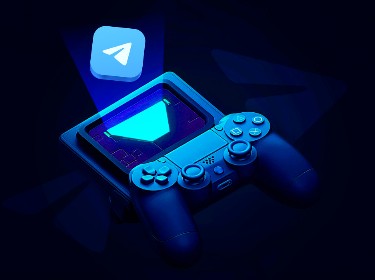Car manufacturers use a variety of advanced technologies, devices, and tools to make their vehicles safe, earn customer satisfaction, and increase profit. Automotive IoT brings fierce competition and stimulates innovation. What are the IoT applications in the automotive industry and possible challenges?
The automotive Internet of Things (IoT) market comprises technologies and tools used in the automotive domain. They are sensors, cameras, GPS trackers, and other devices that are connected to the cloud and demonstrate and save real-time data. These tools provide people with better driving experiences, improve automotive manufacturing, and bring the future of autonomous vehicles closer. Statista predicts that the automotive IoT market will reach $371.61 billion by 2029.
PixelPlex provides custom software development services to businesses in various domains. Our experts create load-resistant automotive IoT solutions that are able to automate workflows and efficiently manage data distribution. They combine sensor and cloud computing with machine learning and blockchain integration to carefully meet the requirements of each project. We asked our IoT engineers to share their expertise regarding IoT for automotive, its implementation, and challenges for businesses.
IoT use cases in the automotive industry
![]()
The IoT market allows businesses to have fast and secure communication between computers and devices. Leveraging custom mobile application development services is vital for companies seeking to fully harness IoT’s potential and contribute to protected data-sharing processes. Here are some more advantages of applying IoT when dealing with the vehicle market:
Predictive maintenance
Preventive maintenance of cars happens on a regular basis according to a fixed schedule. The drawback here is that it may sometimes lead to unnecessary part replacements, as the equipment may not be worn out at the time of check. Predictive analytics for maintenance analyzes the data from sensors or monitoring tools which indicate that something is likely to fail soon. Thus, it reduces unnecessary maintenance, extends equipment life, and lowers long-term costs by fixing things only when needed.
Communicating vehicles
The C-V2X (cellular vehicle-to-everything) technology uses IoT in automotive to allow vehicles to communicate with each other, infrastructure, and pedestrians. The technology includes sensors and cameras installed on vehicles, trackers and units on traffic lights and signal poles, and wearable devices for pedestrians and cyclists. All those tools share the data regarding the speed, route, or location. It allows for reducing the number of collisions or accidents.
- Vehicle-to-vehicle (V2V) exchanges information about the speed, location, and congestion of traffic. It allows cars like ambulances or fire trucks to move quickly avoiding traffic jams.
- Vehicle-to-infrastructure (V2I) connects vehicles with traffic lights, lane markings, and toll booths to optimize traffic and avoid queues at petrol stations and toll booths.
- Vehicle-to-pedestrian (V2P) communication happens via mobile apps where people track public transport or request nearby taxis. Besides, there is a possibility to change the traffic signal to safely cross the street.
- A key part of the Internet of Things automotive landscape, the Vehicle-to-network (V2N) system alerts drivers of the weather conditions and accidents. It also includes connecting vehicles with drivers’ smartphones for voice commands, music settings, and navigation.
In-car entertainment
IoT allows drivers to have a convenient and pleasant experience while on the road. For example, with CarPlay from Apple, drivers unlock their cars with iPhones, listen to music or watch videos while driving, perform hands-free calling, and use voice assistants to dictate messages or navigate the route.
Machine Learning in the Automotive Industry: Benefits, Limitations, and Best Applications
Blockchain in IoT: Data Everywhere, Trust Nowhere?
AI in Transportation Overview 2025
Fleet management
Fleet management allows for connecting vehicles and sharing the data. With this technology, fleet managers easily access information regarding vehicle conditions, oil levels, fuel consumption, mileage, etc. They monitor vehicles’ location and create optimal routes. Besides, sensors can track and regulate cargo conditions, which is important for transporting sensitive goods like food or medications.
Self-driving vehicles
Autonomous cars operate without humans. This is possible due to IoT and AI technologies. AI systems analyze the situation on the road and activate emergency braking if necessary. The Society of Automotive Engineers (SAE) introduced 5 levels of driving automation, a classification enabled by the rise of the Internet of Things automotive sector. These levels differ according to the features that a human driver performs or delegates to the robot, such as accelerating, braking, or steering.
Usage-based insurance
Insurance companies analyze driving behavior with the help of embedded devices or apps in the vehicle. They look at the common speed, acceleration rate, the usage of smartphones while driving, and braking patterns. The riskier the driving style is, the higher the insurance fees the driver has to pay.
Enhanced vehicle manufacturing
IoT in the automotive industry uses data analytics solutions for car manufacturing plants to help improve efficiency, reduce costs, and produce higher-quality vehicles. Car makers use IoT technology to track the supply chain of raw materials and parts, monitor the condition of manufacturing equipment, and take preventive steps to avoid breakdowns. Through IoT in automotive manufacturing, manufacturers can collect large amounts of real-time data to optimize energy use, oversee the production line as it happens, and better control the quality of cars at every stage of production.
Check out DDrive – innovative solutions we’ve implemented for a big car sharing vendor
Real-life examples of automotive IoT implementations
| Company | Application | Core features |
| Waymo | Self-driving taxis (SAE Level 4) | AI, LiDAR, radars, cameras |
| Tesla | Autopilot | Camera-based system, autonomous steering & navigation |
| Mercedes-Benz | Drive pilot (SAE Level 3) | LiDAR, advanced sensors, hands-free driving |
| Ford | Blue cruise | Lane centering, speed sign recognition |
| BMW | Remote parking | Scans parking space via sensors, allows remote control of parking maneuvers |
| GM | Super cruise | Hands-free highway driving & lane changes, extensive map coverage |
| Cyvl | Infrastructure health monitoring | Vehicle-mounted sensors & AI to scan road conditions, signage, and pavement |
Here is a list of well-known car manufacturers and a lesser-known (but equally important) startup that have already implemented IoT solutions in their vehicles.
Self-driving taxis
Waymo is the first company to offer autonomous taxis to people. They have the highest fourth SAE level currently, as no manufacturer has achieved full autonomy yet (level 5). Passengers of the taxi can optimize the temperature inside and choose the music they prefer. The technology behind includes AI algorithms, ML, radars, cameras, etc.
Tesla autopilot
Tesla offers a widely available system that works on almost all roads without geographic restrictions. Tesla uses cameras to perform autonomous driving, steering, changing lanes, and navigating. However, human drivers should be present in the front seat and keep their hands on the wheel. Besides, the sensors collect the data and transfer it to Tesla servers for further analysis and optimization.
Mercedes-Benz Drive Pilot
The Drive Pilot from Mercedes offers a Level 3 autonomous system and takes the steering process off humans on certain roads and in conditions of high traffic (e.g., in California and Nevada). The technology includes advanced sensors like LiDAR and has a strict driver monitoring system to make sure they are watching the road while driving.
Ford BlueCruise control system
The functionality of this system includes lane centering, speed sign recognition, and cruise control. It enables hands-off driving on many highways due to driver monitoring cameras which ensure the driver’s attention is on the road.
BMW remote parking
BMW focuses on safety and driver support but is generally seen as slightly behind its competitors in hands-off capabilities. However, BMW owners park their cars remotely. The system scans the parking space and orders the car to make appropriate maneuvers. A driver stands nearby and monitors the process via a mobile app.
GM Super Cruise
GM’s Super Cruise is a leader in hands-off driving, with strong safety features including driver monitoring cameras and wide highway coverage. As a key advancement in the Internet of Things automotive landscape, it allows hands-free lane changes and is highly rated for ease of use and safety.
Tracking road repairs
Cyvl is a company that monitors road repairs and the overall quality of city roads and sidewalks. Their technology uses vehicle-mounted sensors combined with AI algorithms to scan street networks, detect pavement conditions, signage, markings, and other street assets, and generate detailed, actionable reports. As a result, municipalities track infrastructure health, plan maintenance, and make data-driven decisions to improve road quality and safety efficiently.
How about MVP in a month? We are here for your project implementation – just drop a line
Technologies required for the automotive IoT
![]()
To make cars see and analyze the situation on the road, manufacturers use various devices.
- Light detection and ranging (LiDAR) units: a 360-degree sensor that generates images of the vehicle’s surroundings.
- Cameras: collect the data about traffic lights and signs, and recognize moving objects.
- Radio detection and ranging (radar) sensors: calculate the distance between sensors and obstacles.
- Infrared sensors: detect lane markings, pedestrians, and cyclists in certain environmental conditions and low lighting.
- Inertial navigation system (INS): improves the accuracy of the GPS navigation. Uses accelerometers to detect vehicles’ position and velocity.
- Dedicated short-range communication (DSRC): allows for setting V2V and V2I systems and sharing the data about traffic conditions, accidents, changes in the route, etc.
- Prebuilt maps: correct errors of the GPS routing.
- Ultrasonic sensors: notify about short-distance obstacles to assist parking.
- Global positioning system (GPS): determines the position of the vehicle with satellite data.
Software developers support the IoT in the automotive industry with other advanced technologies to fully comply with their customers’ requirements.
5G provides stronger and faster connections between vehicles and the cloud, sending much more data at speeds five to ten times faster than 4G. This helps cars communicate smoothly with each other and with road systems. Thanks to 5G, fleet management improves.
Artificial intelligence examines the data and extracts important details. For example, it analyzes drivers’ behavior, and the insights are further used in car predictive maintenance, diagnostics, fleet management, and usage-based insurance.
Computer vision software development allows vehicles to see the surrounding environment and analyze it through sensors, cameras, LiDARs, etc. The system uses this data to guarantee safe driving.
Data analytics tools read large amounts of data and spot possible equipment problems before they happen, making the supply chain and quality control run more smoothly. These tools are also used to understand customer behavior, improve their experience, and plan better marketing strategies.
Cloud computing is responsible for sending updates and downloading them over Wi-Fi. Besides, some navigation systems work better when connected to the cloud. Developers use cloud computing to help technological startups create digital twins of the traffic infrastructure.
How to Use the Internet of Things (IoT) in Manufacturing
What Is IoT? Complete Guide to Internet of Things
Both terms mean the same concept and can interchange with each other. However, automotive IoT is a bit broader. It includes the network of connected devices, sensors, and software embedded in vehicles that communicate with each other. The term Internet of Cars emphasizes the connection between cars within the IoT ecosystem. It positions cars as nodes in the IoT network, exchanging data in real-time with other cars, infrastructure, services, and users.
Challenges and relevant solutions
![]()
Cybersecurity
The Internet of Cars offers people a convenient future. Imagine, your car transfers a message to your mechanic when something is wrong, or your mechanic reads the engine remotely. These possibilities make life easier, but at the same time, it poses significant security threats. The U.S. government has recently introduced its Cyber Trust Mark. It is a labeling program for internet-connected devices.
According to the official statement, “This will help consumers make informed decisions about the products they bring into their homes, will differentiate trustworthy products in the marketplace, and create incentives for manufactures to meet higher cybersecurity standards”. In other words, when shopping for smart devices, consumers will look for a special mark that will indicate that the product was tested for security issues. Therefore, consumers feel confident about their choices, and manufacturers, particularly with the growth of IoT in automotive manufacturing, have an incentive to make their products more secure to earn the mark.
Solution: Distributed ledger technology (DLT) is a promising solution for the Internet of Cars because it keeps data secure and private from the start. DLT works by storing data across many computers and servers instead of in one place. This means the data is saved permanently, and any new information added must be checked using math to make sure it’s correct. It is strong against hacking, and the information on these networks is almost impossible to steal or sell without permission. For connected cars, DLT must be secure, fast, easy to update, and free to use. Security, speed, and no fees are very important. Simple things like paying for parking automatically might seem small, but solving these problems now will help make the whole Internet of Things safer and easier to use.
Network reliability
To communicate with other vehicles and receive timely updates about the road infrastructure and cloud services, connected cars must have stable and fast networks. Even a brief loss of connection may result in disrupted navigation, delays of critical updates, or failures in safety features. Such situations lead to accidents on roads and poor user experiences. That is why network reliability is a top concern for automotive IoT.
Solution: The rollout of 5G networks and future technologies like 6G offer a promising path forward. These networks provide faster speeds, lower latency, and more stable connections even in rural or remote areas where coverage is often weak. Additionally, multi-carrier roaming and managed connectivity services ensure vehicles can automatically switch to the best available network worldwide. This seamless connectivity helps keep vehicles online and safe at all times.
Data management
Modern vehicles generate massive amounts of data from sensors, cameras, and telematics systems. Managing this data, i.e., collecting, storing, processing, and securing it, is a huge challenge. Poor data management may lead to delays in decision-making, privacy risks, and increased costs for storage and transmission.
Solution: Advanced edge computing and distributed data architectures help process data locally within the vehicle, reducing the need to send everything to the cloud. This lowers latency and bandwidth use while improving privacy and security. Technologies like blockchain secure data sharing by making it tamper-proof and decentralized. Together, these approaches ensure data is accurate, timely, and protected, enabling smarter and safer vehicle operations.
High costs
Implementing IoT in vehicles involves expensive hardware, software development, network subscriptions, and ongoing maintenance. These costs can slow down adoption, especially for smaller manufacturers or fleet operators.
Solution: IoT for automotive providers are developing scalable solutions that reduce upfront investments and operational expenses. Using modular hardware, software-as-a-service (SaaS) models and global IoT connectivity plans with multi-network access helps spread costs and simplify management. Over-the-air (OTA) updates also reduce maintenance visits and extend vehicle lifespans. By optimizing resources and leveraging economies of scale, IoT becomes more affordable and accessible across the industry.
Benefits of the automotive IoT
![]()
The IoT domain provides multiple benefits to automotive manufacturers and drivers.
- Increased safety: Technologies allow for safe driving due to predictive car maintenance and careless drivers’ behavior analysis. Sensors and cameras inform drivers about the necessity to change parts. Besides, the car can perform emergency braking if an unexpected situation occurs.
- Improved vehicle manufacturing: Production experts use the data collected from IoT tools to know how to tailor future vehicles to consumers’ needs. It makes factories more competitive in the market.
- Reduced air pollution: Sensors analyze and optimize individual fuel consumption. Besides, they help drivers avoid traffic jams by planning relevant routes. The result lies in less time spent in congestions and generally decreased levels of emissions and air pollution.
- High customer satisfaction: IoT-enabled cars provide consumers with a personalized driving experience due to their infotainment systems. People spend their time listening to their favorite music, watching videos, or chatting with friends without distracting their attention from the road.
- Saved costs: Drivers save money, as they pay only when there is a real necessity to repair or change something. Car makers also benefit from predictive maintenance, as they cut equipment repair costs. Besides, careful driving allows for lower insurance fees.
- Better road and traffic management: By analyzing the data collected from vehicles and surrounding infrastructure, municipalities can figure out which areas or parts of the roads are the most dangerous at times of high traffic congestion. Besides, they can gather data regarding pavement conditions and take timely actions to improve the quality of roads and sidewalks.
Wrapping up
PixelPlex engineers and blockchain experts bring our customers up to $5 million in revenue during the first year of their project’s implementation. With IoT development services, we assist car companies that decide to embed IoT technologies into their workflows to achieve high customer satisfaction. When combined with new tools like 5G, artificial intelligence, cloud computing, and data analysis, IoT helps manage fleets, improve car manufacturing, and speed up the creation of smart and self-driving cars. We take care of security and connection issues and help businesses provide their clients with safer driving possibilities. If you want to add IoT to your automotive project, our team of experts is here to help, just contact us.
FAQ
A McKinsey report indicates that autonomous vehicles (starting from level 2 automation) are the fastest-growing sector of the IoT domain. It predicts a CAGR growth of 37% between 2020 and 2030. It means people will continue looking for better safety and reliability, stimulating the IoT applications in the automotive industry for further development.
Self-driving cars use different types of networks for connection. For example, cellular networks (LTE, 4G, 5G) or Wi-Fi allow for Internet access. Dedicated short-range communication (DSRC) frequencies connect vehicles with each other (V2V) and with the infrastructure (V2I). To enable the vehicle’s infotainment system, drivers use Bluetooth.
Blockchain, or distributed ledger technology (DLT), secures data exchanges between vehicles and infrastructure, which is particularly crucial for IoT applications in automotive. It makes it harder for hackers to steal sensitive information and leads to data integrity.
Manufacturers use over-the-air (OTA) updates, a key application of IoT in automotive manufacturing, which allow them to remotely send software improvements and security patches to vehicles without requiring a visit to the dealership.




